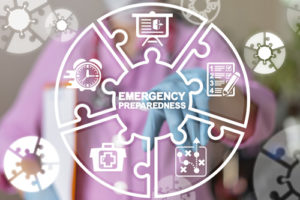The late American Hall of Fame Basketball Coach John Wooden aptly stated, “Confidence comes from being prepared.” This saying is particularly timely given academic communities’ recent focus on addressing the coronavirus threat.
While no one can predict when the next crisis will hit or what it will entail—a natural disaster, disease outbreak, or campus security threat—every institution should be asking itself two critical question: “Are we equipped to handle the current crisis?” and “Are we nimble enough to handle a future crisis?”
Related content: What Hurricane Florence taught us about emergency communications
The current environment presents an opportunity for institutions to fine-tune their disaster preparedness plans. While this task can feel daunting, below are four strategies for keeping the academic community safe and ensuring that teaching and learning continue with minimal interruption.
1. Ensure you have the right infrastructure to communicate with your community quickly and clearly
When facing any scenario that requires your institution to deviate from “business as usual,” it’s critical that the new plan of action is communicated quickly and clearly to students, faculty, staff, and other members of the extended community.
Doing so requires a well-oiled notification system that can overcome potential communications barriers (i.e. power outages, poor internet quality, and limited access to computers) and reaches individuals wherever they are at any given time. As such, notification systems should leverage multiple communications channels—email, phone, SMS, text, and social media. Anticipate potential scenarios and have effective and concise messaging that can be easily tailored to effectively communicate to each of your audiences.
2. Maximize your digital learning tools
Digital learning is one of the most effective ways to ensure teaching and learning continues when in-class courses aren’t an option. Depending on the scenario and institutions’ unique needs, there is an opportunity to work hand-in-hand with your learning management system (LMS) partner to expand use of the LMS, audio/video conferencing solutions, collaborative tools and mobile platforms. Institutions should consider developing turnkey plans for rapidly rebuilding in-class courses as digital courses leveraging the unique set of digital instructional design principles. This guidance ensures that students experience the same high-level quality of instruction, curriculum, and engagement they experience in in-class courses and those designed from inception as digital courses. For example, instructors rely on audio/video conferencing to instruct in real time and enable message board capabilities within the LMS to encourage students to interact with each other and the instructor. When developing this plan, institutions should consider selecting a point person from every department whose role is to collaborate with the online learning/IT teams during implementation.
3. Require instructors to participate in professional development for digital learning tools
To drive the highest level of academic success, it’s important that instructors are fluent in the digital technologies that on-campus and distance-learning students use. Recent crises such as Hurricane Harvey in 2017 and now the spread of COVID-19 are proof that instructors likely will need to leverage digital learning tools at some point in their career, regardless of the degree to which an instructor may currently integrate digital learning into their courses. By providing frequent, mandatory professional development trainings, institutions can ensure that instructors are fully prepared to shift to a blended—or even entirely digital—learning environment when the need arises. By steeping instructors in a digital learning environment, institutions can encourage them to further integrate digital technologies into every aspect of the teaching and learning experience, well before a crisis hits.
4. Consider condensing/shortening courses to allow students time to adjust
Flexibility is key when academic communities are forced to make unanticipated adjustments to the way they teach and learn. Regardless of the reason for needing to adapt, two priorities are always at the forefront: 1) ensuring students can continue their studies and work towards their academic goals and 2) maintaining enrollment. It’s well known that courses are designed to span the length of an institution’s semester. However, when teaching is delivered in a new, sometimes unfamiliar way, it can take students time to adjust to a new academic routine while juggling the other daily demands. Giving students ample time to adjust by delaying the start of a course or condensing the length of a semester can be the difference between a student staying enrolled or dropping a course.
The best practices above, paired with the most current guidelines outlined by governing bodies, such as the Read Readiness and Emergency Management for Schools (REMS) Technical Assistance (TA) Center, will ensure institutions are well-prepared if coronavirus—or any disaster—impacts their education community.
- 8 top trends in higher education to watch in 2024 - April 16, 2024
- Defining a path to equitable AI in higher education - April 12, 2024
- Leveraging AI-driven edtech for continuous improvement in higher ed - April 11, 2024

